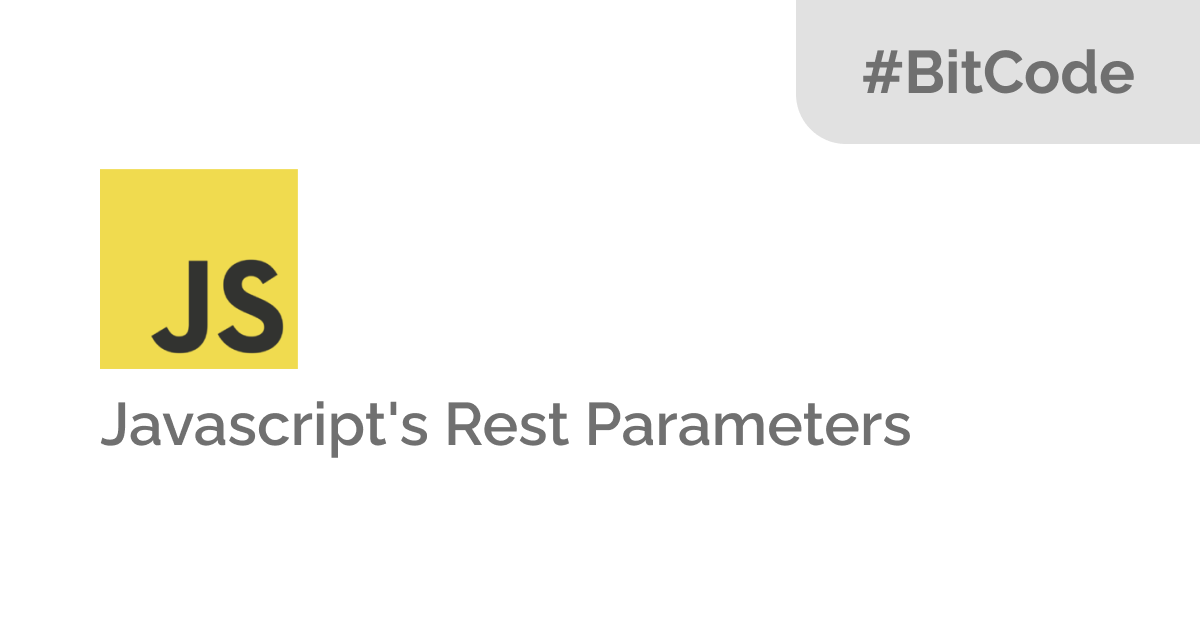Javascript's Rest Parameters
Rest Parameters, Explained!

JavaScript's functions with the Rest parameters (also commonly called Rest Operator) are simply JavaScript's ways to implement variadic functions, and in this BitCode we will take a quick look into it along with some examples.
It allows a function to accept an unlimited number of arguments that will be available as a list inside the function.
The Syntax
The Rest parameters syntax is a sequence of three dots ... followed by an argument name, all inside the parentheses of a function.
Please do not confuse Rest Parameters with the Spread Syntax, take a look at this BitCode or click the link below to know more about it.

Quick Notes
Some notes to write down before start using the Rest parameter.
- A function can only have one Rest parameter,
- The Rest parameter should be the last parameter in the function definition.
After clearing these points, let's take a look at some examples.
Examples
Let's see a couple of examples using the Rest parameter.
- Find the max of undefined number of items
const findMax = (...numbers) => {
return Math.max(...numbers)
}
console.log(findMax(1, 2, 4, 100, 410, 0))
// Output: 410- Get the sum of a bunch of number
const sum = (...numbers) => {
return numbers.reduce((x, y) => x + y, 0)
}
console.log(sum(10, 2, 3, 89))
// Output: 104

